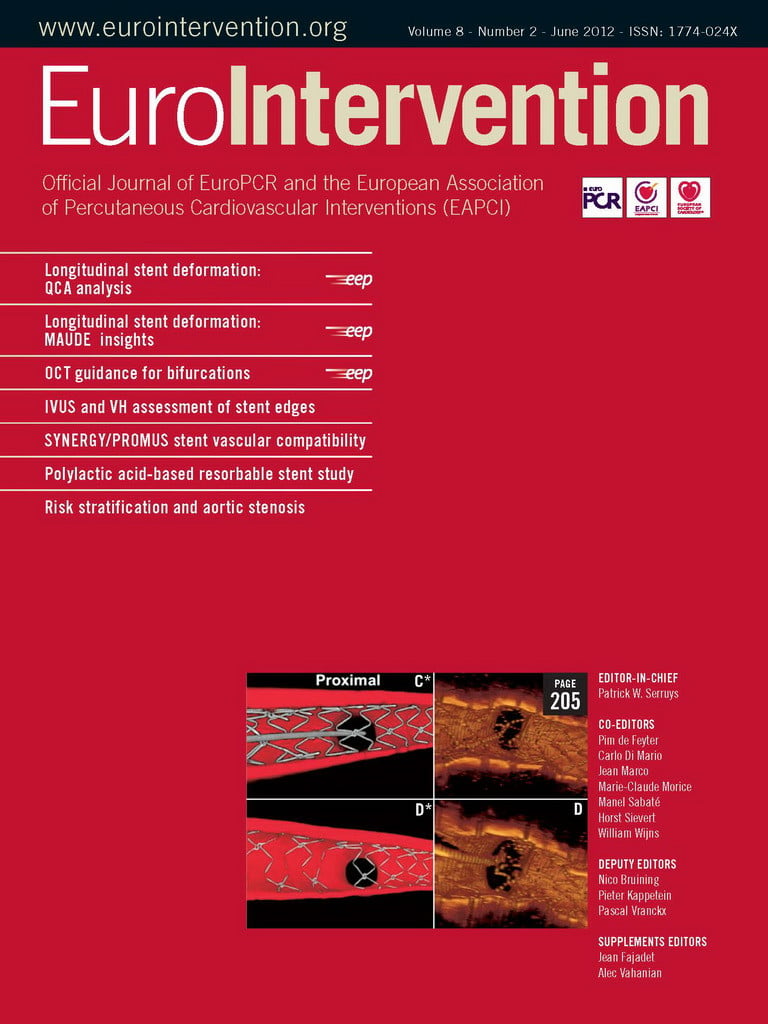Advances in percutaneous technologies for the treatment of mitral regurgitation provide another opportunity for surgeons and cardiologists to work together, sharing knowledge and technical expertise, to benefit patients through the selective application of complementary approaches to structural heart disease. This is particularly true in the management of ischaemic mitral regurgitation, a condition to which a great deal of attention has been paid over the past decade in the surgical community. Despite these efforts many questions remain; perhaps together surgeons and cardiologists can answer some of them over the decade to come.
In the interest of establishing common ground, it is worth noting that, by definition, “ischaemic mitral regurgitation” is that occurring in patients with a completed infarct –and not that due to ongoing ischaemia. While this may be well recognised in the interventional community, this distinction has not always been made clear in surgical studies; this may in part have contributed to the hotly contended debate over the role of revascularisation alone in addressing the condition as opposed to coronary bypass with mitral repair1,2. While one might argue that both forms of mitral regurgitation are, in fact, due to ischaemic heart disease and consequent regional wall motion abnormality with “leaflet tethering” as the mechanism, the distinction is perhaps useful as a potential explanation for the aforementioned controversy. It would surprise no one that mitral regurgitation secondary to regional ischaemia without infarction improves after revascularisation. The implication, of course, in the coming era of percutaneous devices, is that not all mitral regurgitation observed in the cathlab needs to be treated directly despite the temptation and convenience to do so “while the catheter is in place.”
The counter to this smug posture is, of course, the well-recognised apparent impact of mitral regurgitation on survival3. In the surgical community, this observation and the belief that the relationship of mitral regurgitation to poor outcome was considered causal rather than as a marker, lead to fervent enthusiasm for intervention. Unfortunately, a favourable impact of mitral repair or replacement on survival has, in fact, been difficult to demonstrate4-6. One small study suggested a difference in survival of the subset of patients with NYHA class III or IV symptoms4, but a subsequent study of a much larger cohort failed to confirm this distinction showing similar operative risk and improvement in symptoms whether the valve was addressed or not6. Of course this was not a randomised study, as such have been notoriously difficult to conduct among surgical patients. The advent of percutaneous technologies may provide us a better opportunity to do just that. There should not, however, be assumed a direct relationship between successful correction of mitral regurgitation and survival.
Finally, and perhaps most vexing to surgeons, has been the difficulty in defining the best anatomic correction. Indeed many would argue that the reason for the failure to demonstrate impact on symptoms and survival has been the technical inadequacy of repair. Recurrent mitral regurgitation is common7. It has been long argued that “ischaemic mitral regurgitation is a ventricular disease” with anatomic defect residing not the valve itself, but in the myocardium. Accordingly it is perhaps not surprising that interventions focused on the valve itself have proven so unsatisfying that numerous techniques have been reported ranging from radically undersized annuloplasty to leaflet augmentation, papillary muscle repositioning and ventricular restraint. Notably the “Alfieri stitch” has been applied with success, although routinely in combination with annuloplasty8. Most recently, a cohort of surgeons has appeared in favour of replacement over repair in the setting of ischaemic disease9,10 on the basis that “a good replacement is better than a bad repair.”
The advent of percutaneous approaches to the treatment of ischaemic mitral regurgitation is welcomed by both the surgical and interventional communities. It is a bad disease, with poor late survival and often symptomatic patients. The operative risk is, generally speaking, significant, and the surgical results have been variable. This is not to say that all patients should be treated non-operatively any more than all should undergo surgery. This represents another opportunity to tailor therapy to the specific patient, and another opportunity to provide optimal care via a “heart team” approach.
Conflict of interest statement
The authors have no conflicts of interest to declare.

